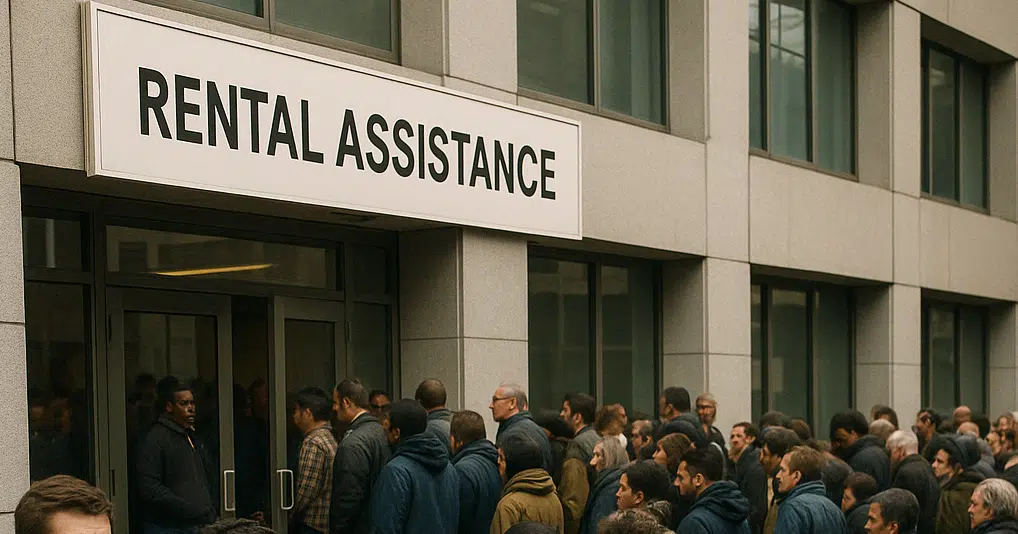As rental prices continue to surge across the U.S., families relying on Section 8 housing vouchers are finding their assistance doesn’t go as far as it used to. In many communities, the gap between what a voucher covers and what landlords are charging is growing wider—shutting out low-income renters from even modest housing options.

FFair market rent vs. reality
Section 8, formally known as the Housing Choice Voucher Program, is designed to help families cover part of their rent by paying a portion directly to the landlord. The amount covered is based on Fair Market Rent (FMR)—a benchmark set annually by the U.S. Department of Housing and Urban Development (HUD).
But in 2025, FMR calculations are lagging behind the reality of what’s happening in the rental market.
“The market’s just moving too fast,” said a housing counselor in Phoenix. “We have clients with vouchers getting denied because landlords know they can get more elsewhere.”
In Maricopa County, Arizona:
- FMR for a 2-bedroom: $1,424/month
- Average listed rent: $1,800/month or more
That $375+ gap makes many properties unaffordable for voucher holders—even if they’re technically eligible.
Why the gap is widening
There are several reasons for the growing disconnect:
- Rent inflation outpaced HUD’s annual updates
- COVID-era protections ended, pushing more demand into fewer units
- Investors and short-term rental conversions have reduced the stock of long-term affordable units
- Landlords are increasingly opting out of Section 8 to avoid red tape or capitalize on private market rents
In some areas, landlords list even studio apartments above FMR levels, forcing voucher holders to move far from work, family, or school.
What HUD has tried to fix
HUD recently gave Public Housing Authorities (PHAs) more flexibility in setting payment standards—allowing them to pay up to 120% of FMR in some cases. That change, covered in this FingerLakes1.com report, was meant to give PHAs the tools to compete with rising rents.
But implementation has been uneven.
Some local authorities lack the funding or staffing to quickly recalibrate their standards, leaving many stuck with outdated rent caps as prices continue to rise.
The real-world impact
Voucher holders who can’t find a rental within 60 to 120 days risk losing their assistance altogether. That leaves families facing tough decisions: settle for substandard housing, move out of their community, or risk homelessness.
“We had a family approved for a voucher in February,” said a housing navigator in Rochester. “They lost it by April because they couldn’t find anything that met the program’s limits.”
And for those who do find housing, they’re often forced to spend more than the standard 30% of their income on rent, putting added pressure on tight budgets.
What needs to change?
Housing advocates say there’s still time to bring the program back in line with the market:
- HUD should consider quarterly FMR updates in fast-moving markets
- Local PHAs need additional funding to adjust payment standards quickly
- More cities should pass source of income protections to prevent landlords from rejecting vouchers outright
Until then, many renters will find that the help they’ve qualified for simply isn’t enough.
For more:
- Landlords Are Leaving Section 8—Here’s Why
- How to Qualify for a Section 8 Voucher in 2025
- Section 8 Scams Are Spreading in 2025
Related Reading
Want to check out more from FL1? Check out these related topics!
- Your Life, Your Money
- Stimulus Check News
- DOGE News
- Food Stamps & SNAP News
- Social Security News
- SSA Cost of Living Adjustment News
- IRS News
- Child Tax Credit News
- Latest from Congress
- Gas Prices
- Medicaid
- Medicare
Stay informed. For the latest breaking news and headlines from across the FL1 National Desk subscribe using the Google pop-up prompt or download the FingerLakes1.com App!
